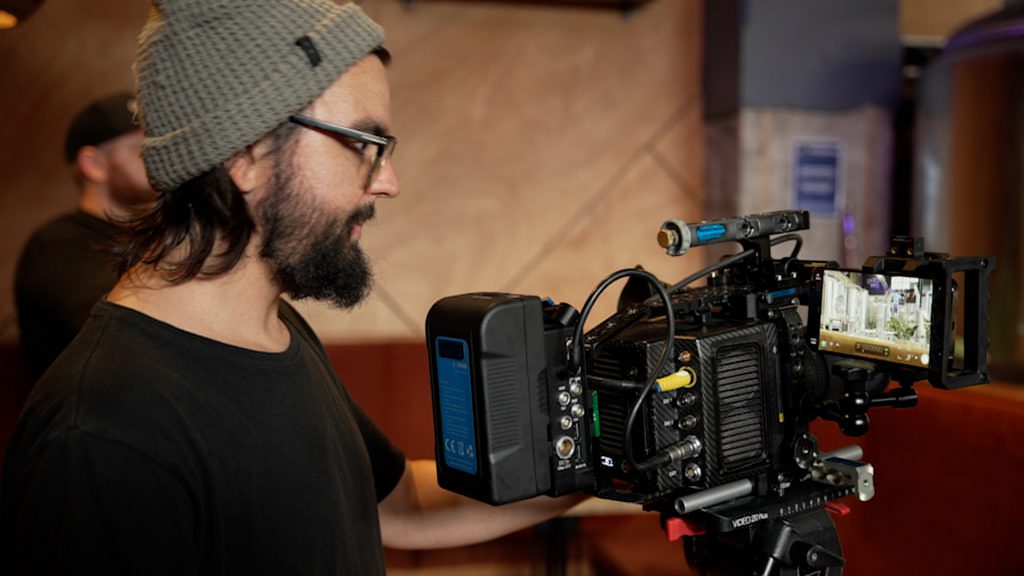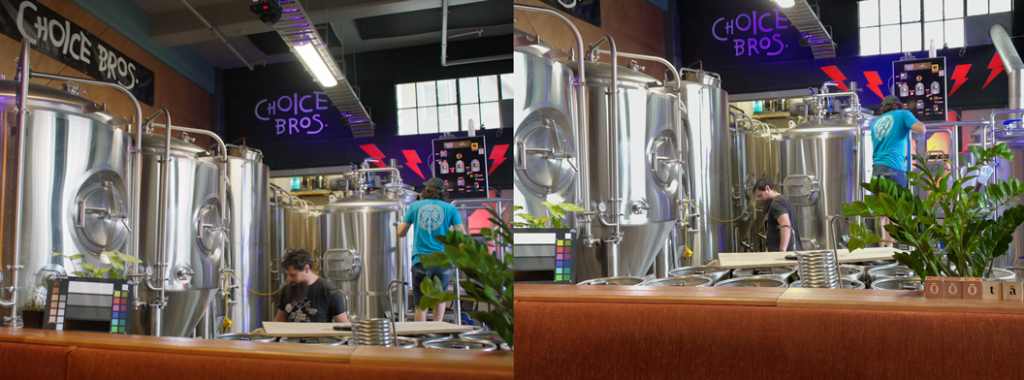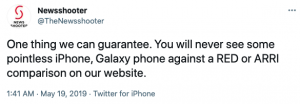Here at FilmConvert HQ we’ve been working hard to get the iPhone 12 Pro into the World’s best camera matching software – CineMatch. While we were at it, we thought we’d try to answer a question that has been plaguing the internet for millennia – can you make an iPhone look like an Alexa?
Now every time this question pops up on the internet, it is handily squished by a barrage of sceptical commentary, and not without cause. We have noticed though that the iPhone 12 Pro, with its 10-bit HDR, is a much more capable device than what we’ve seen in the past, and this makes us curious.
As camera matching experts, who better to take a poke at this?
We decided to see how close we can get the colour without breaking a sweat, and if the iPhone can hold up when digitally manipulated to look like the gold standard in digital filmmaking. Let’s see what it can do!

We grabbed an ARRI Alexa Mini for the day from Rocket Rentals and strapped an iPhone to it to see how it compared side by side.
Test Setup
We shot ARRIRAW for the Alexa and FiLMiC LOG v3 for the iPhone. We’ve been using FiLMiC Pro for years on the iPhone, as it’s by far the best way to get real control over your images. If you are serious about shooting anything on the iPhone, the first step is to ditch the standard camera app.
Oh, and a shout out to our good friends at Newsshooter for inspiring this 🙂
Shot 1 – Choice Bros.

Our first tests were shot over at Choice Bros in Wellington. Thanks very much to the Choice Bros team for letting us use their space.

Now as you’d expect, the images out of the box were exposed quite differently and there are some noticeable differences in terms of color. The images above are the final matches in REC.709. You can view all the original step-by-step images over here.
With CineMatch applied, we are lined up quite well. Exposure and colours are looking good, the leaves are a lot closer and the overall vibrance of the pink wall is looking good. The saturation in the table is a little off as there are some values on the table that are clipped, causing a strange roll off. Black levels are a bit high due to the iPhone’s Dynamic Tone Mapping.
Now the Dynamic Tone Mapping deserves a special mention, because at this stage there is no way to turn it off. On one hand, it does a nice job of capturing pleasing one-off HDR images out of the box, but on the other hand it takes away the ability to control the tone curve of your image, which can “add complexity” to your color grading. For CineMatch, this means you’ll often need to tweak your contrast. (As filmmakers, we’d prefer the option to switch this off entirely).
For a quick overview of the iPhone’s dynamic tone mapping here is a breakdown from our friend Richard Lackey: https://www.richardlackey.com/what-is-dynamic-tone-mapping/
Shot 2 – The Brewery
Still at Choice bros… out by the brewery.

So here is another example of the power of CineMatch. The colours were completely different as you can see in the original footage. As soon as you apply CineMatch, you are getting nice consistent colours across the scene.

The big problem here is the huge dynamic range shift between the two. The ARRI is capable of capturing the white patch on the chart and brighter whites coming from the reflections of the kegs and the window.
The iPhone is clipped at the white patch on the chart and doesn’t have a chance of getting any data out of the reflections or the window.
The iPhone does surprisingly well with the neon lights that could have been problematic; the REC.2020 capture gamut deals with them well. The only issue is on the light to the right of the brewer where the gamut has clipped.
Shot 3 – Fruit

For this test we used some natural saturation examples from mother nature to see how the vibrance lined up. The results are impressive. The reds and oranges are slightly more punchy on the Alexa, but with CineMatch applied you can get the iPhone incredibly close. The number one issue here is the low bit-rate of the iPhone, and the introduction of compression artifacts in the blacks.

The backdrop we used here is close to a black carpet material, and that texture seemed too much for the bit-rate of the iPhone to handle. Crush the blacks in the background and again we can get it looking more impressive. Original footage over here.
Shot 4 – Cambelles


So I’ve been working on CineMatch for many years now, and I have to say I was shocked at this result. The Cambelles chart from DSC Labs is a great test chart, as you have a variety of skin tones and a blue sky. It’s these specific areas, in my opinion, that makes the Alexa look so good when compared to the competition. And when you apply CineMatch on the iPhone you can replicate this very well. Again the iPhone is noisy, the whites in the wave are clipped and artificial sharpness is very noticeable. But in terms of colour… DAMN!
Conclusion
So was this a pointless exercise? Maybe… but we did get a beer out of it 🙂
The question was: can we make an iPhone look like an Alexa? Not exactly, but I’d say these results show that in terms of color, you can get it close; surprisingly close. It shows that if you need “the shot” and have an iPhone in your pocket, you can crowbar it in your timeline with ease using CineMatch. If you want to give your iPhone footage the ARRI flavor, or want to use a creative LUT that has been designed for the Alexa – use CineMatch.
The 10-bit is a great addition, making adjustments much easier. A higher bit-rate would be very welcome, and especially the ability to turn off the dynamic tone mapping. Maybe a video implementation of the new ProRAW? I’m sure a company as innovative as Apple can figure out a way to do that without the phone being so hot it burns your hand to a crisp. Apple gloves perhaps?
I don’t think Apple should offer an Alexa trade-in scheme just yet but these results show that pulling a telephone out of your pocket on-set shouldn’t be scowled at. If the situation calls for it, it’s in the right pair of hands with the right software, then this is a valuable filmmaking tool.

